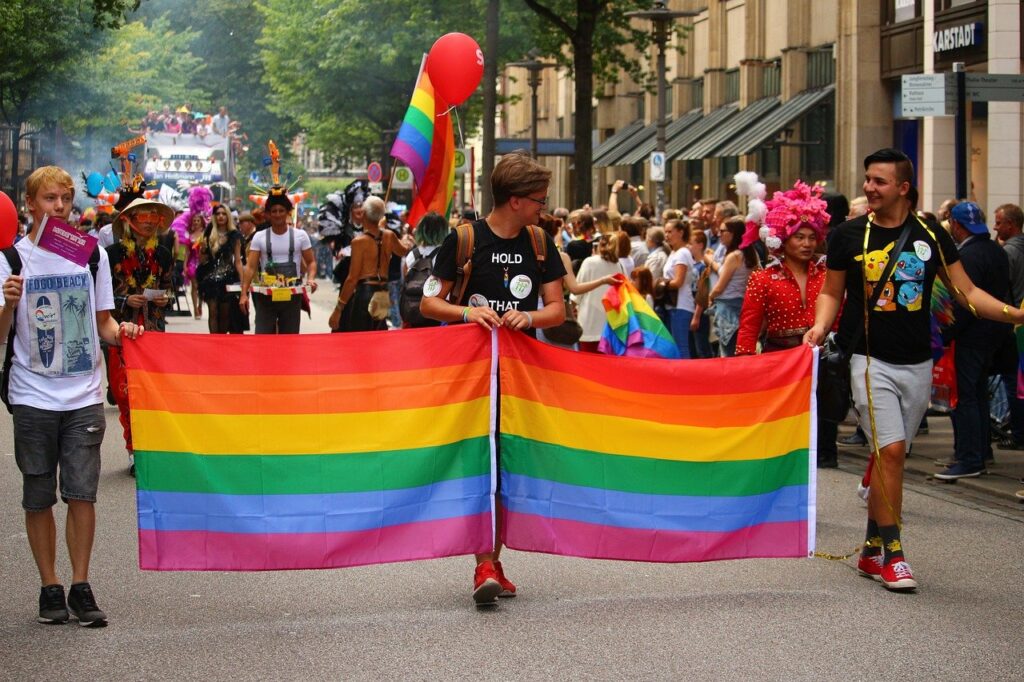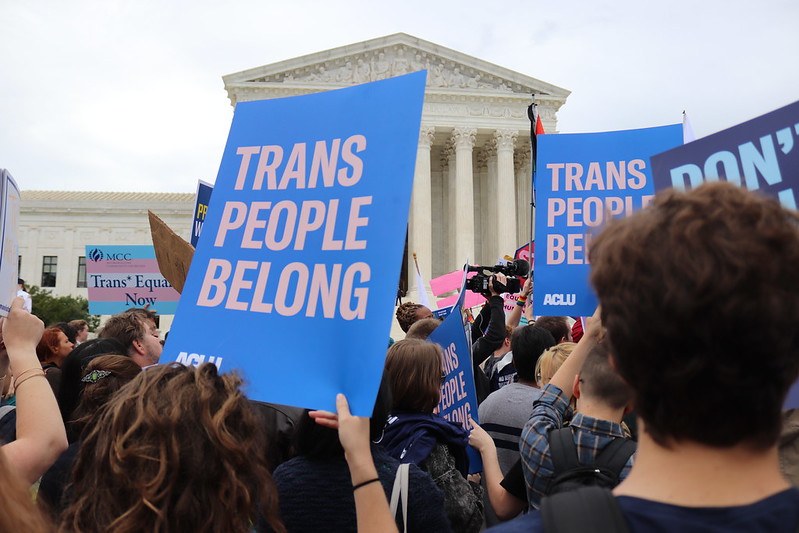Anti-LGBT discrimination and victimization contribute to an increase in the risk of suicidality and that LGBT people are at disproportionate risk of suicidal ideation, planning and attempts.

Last month, the Williams institute at the UCLA School of Law released a startling report about rates of suicidal behavior in the LGBTQ community—a community with historically higher rates of suicide than the general population.
These higher rates were confirmed by a 2016 review of research which revealed that 17 percent of lesbian, gay or bisexual (LGB) adults had attempted suicide at some point during their lifetime (as compared to 2.4 percent of the general U.S. population).
Another report from the Generations study (which surveys cisgender LGB people) found that LGB people who had undergone conversion therapy were at significantly higher risk of suicide behavior—92 percent more likely to think about suicide, and 88 percent more likely to actually attempt it. Conversion therapy, which has been condemned by the American Psychiatric Association, is currently only fully banned in 20 states and the District of Columbia.
“Experiences of discrimination and bullying can lead to suicidal behavior in LGBT people,” said Ilan Meyer, distinguished senior scholar of public policy at the Williams Institute. “Policies and interventions that effectively reduce stigma and discrimination while strengthening support networks and community connectedness could help reduce the risk of suicide for LGBT adults and youth.”
Trans People at Even Higher Risk
The 2015 U.S. Transgender Survey (USTS), conducted by the National Center for Transgender Equality, found that transgender adults also have significantly higher rates of suicidal thoughts and attempts.
- 82 percent of survey respondents reported having seriously thought about suicide at some point in their lifetime, while 48 percent had thought about it within the past year.
- 40 percent of respondents reported attempting suicide at some point in their lifetimes, while 7 percent reported having attempted it within the past year.

Furthermore, a 2019 analysis of the USTS using data from 2015 showed that respondents were more likely to report experiencing suicidal thoughts or attempts if they had been subject to discrimination or violence.
- Respondents who had experienced rejection by their family of origin were twice as likely to report having attempted suicide within the past year than those who hadn’t experienced rejection.
- 30 percent of respondents who had been physically attacked in a public place reported attempting suicide within the past year (compared to only 7 percent of those who were not attacked reporting attempts).
- 98 percent of respondents who had experienced at least four instances of discrimination and violence within the past year had thought about suicide that year, and of those, over half (51 percent) had attempted suicide.
The study also revealed factors associated with lower risk of suicidal thoughts and attempts for transgender people—trans people with supportive families, and those who sought and subsequently received gender-affirming care were less likely to report suicide attempts within the past year.
Unfortunately, the USTS—the most comprehensive source of data on transgender people in the U.S. (and is therefore a massively important source for policymakers and non-profits)—is currently under threat, due to organizational failures and the pandemic.
Youth at Risk
A 2014 report found that LGBTQ youth are also at higher risk of suicide and related behaviors—according to the report, they were three times as likely than non-LGBTQ youth to have suicidal thoughts, harm themselves or contemplate suicide.
The report also found that risk varied based on other identity factors, such as race and gender:
- Girls who participated in the study were found to have higher prevalence of all outcomes including suicidal thoughts, self harm and attempts.
- Black and Asian youth reported significantly lower rates of suicidal ideation, planning, and self harm than their white counterparts. However, Native and Pacific Islander youth and Latinx youth were significantly more likely to have attempted suicide within the past year, compared to their white counterparts.
A 2019 report found that nationwide, anti-bullying laws that protect youth based on sexual orientation were associated with fewer suicide attempts among all youth. While all states have laws aimed at preventing bullying, only 20 states (and the District of Columbia) currently have anti-bullying laws that specifically prohibit harassment of students based on sexual orientation.
The data clearly shows that supportive networks and proactive anti-discrimination policies make a difference in LGBT mental health. In the time of COVID-19, when many LGBT people may be stuck living with unsupportive family members or without access to their usual support networks, the LGBT mental health crisis is more important to address than ever.
With advocacy and policy changes, we can fight this.
Resources
Are you or a loved one struggling with mental health issues? You’re not alone—and there’s help out there.
LGBT specific resources:
- Trans Lifeline: (877) 565-8860
- The Trevor Project: (866) 488-7386 (support and suicide prevention services to LGBTQ youth ages 13-24)
- The Gay, Lesbian, Bisexual and Transgender National Hotline: (888) 843-4564
- The GLBT National Youth Talkline (youth serving youth through age 25): (800) 246-7743 (also offers online chat support)
Looking for an LGBT/POC-inclusive mental health provider?
- National Queer and Trans Therapists of Color Network
- GLMA Health Professionals Advancing LGBTQ Equality (Provider directory of LGBT-inclusive mental health practitioners)
- Therapy for Black Girls (resources for Black women and girls, including a provider directory)
- Psychology Today (has a comprehensive national directory of mental health providers that you can filter by identity/issue)
You can also call the National Suicide Prevention Hotline at (800) 273-8255 (online chat also available), or contact the crisis text line by texting START to 741-741 (offers free, 24/7 support).





